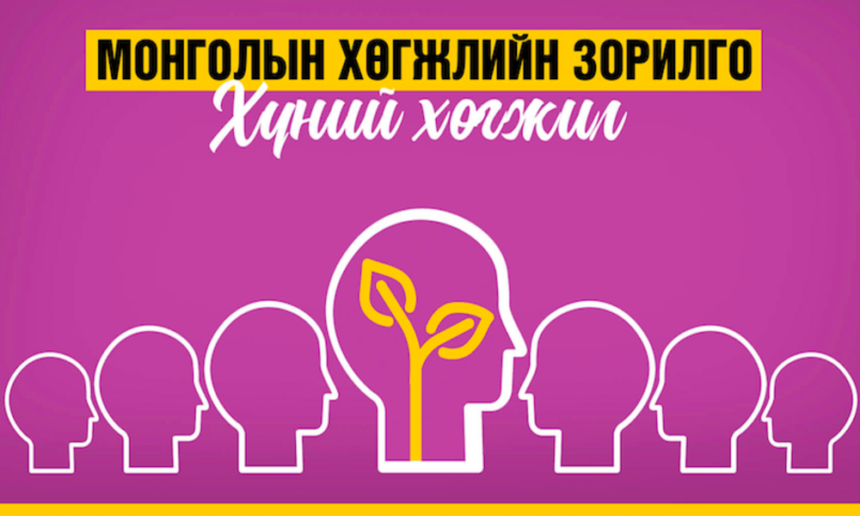The government has devised the long-term development policy “The Foresight 2050” and submitted it to the Parliament. This document presents three-phase development policy, that is to be implemented over the next 30 years, each phase lasting for ten years. In doing so, they set out their goals in nine major areas. One of these areas is human development. In pursuit of this goal, the document states “to create capabilities to ensure quality of life, social security, guarantee family life with favorable social conditions, to provide everyone with high quality education which will lay the foundation of national development and develop socially active Mongolian citizens; to increase the HDI up to 0.9 and rank among the top ten in the happiness index”. Reaching 0.9 in the HDI implies the level of western countries such as Norway, Germany and New Zealand.
Measuring country development by human development
The concept of human development was popularized in the 1980s, and its theoretical foundations have been laid out by Nobel laureate economist Amartya Sen, who developed the “Capabilities Approach” theory in 1980. A. Sen asserted that development cannot be measured only by economic growth (GDP), since it requires capabilities and functions for a person to build a happy life. Development was understood as economic growth because economists in the past focused solely on resources. But a more important notion is whether the people have the capability to create a life in which they are convinced of their well-being. For instance, it wouldn’t make sense for a disabled person to obtain a bicycle. Vice versa, there is no need for a bicycle if the environment itself is dangerous.
According to A. Sen’s theory, poverty is not just about the shortage of money or resources. Poverty is due to the lack of capabilities for people to live well. For example, a person with a serious illness cannot entertain economic relationships like others. No large sum of money can be spent effectively, if the person who has inherited it, is an illiterate.
Based on this concept by A. Sen, the UN developed the Human Developed Index. To compile this index by country beyond the GNI per capita based on purchasing power parity (PPP), additional three indicators are calculated, such as life expectancy, expected years of schooling and the mean average years of schooling. The following table illustrate show the HDI of Mongolia has changed over the years.
Table: Human Development Index

Resource: UNDP
As can be seen from the table above, the HDI of Mongolia was 0.735 in 2018. According to “The Foresight 2050” it is estimated to reach 0.9 in 2050. However, the Millennium Development Goal adopted in 2005, was set to bring the Human Development Index to 0.83 by 2015. It remains yet to be achieved by 2020. How realistic are these goals? Was the government ever held accountable?
Is policy making just a “paper factory”?
The government of Mongolia has generated 567 policy documents since 1990. Among them, of course, few documents cover the entire development of the country. Why is it that all these policy documents only remained paper factory products?
While many reasons make a case in answering this question, the main reason remains the overgeneralization and lack of focus in defining the objectives. Secondly, social consensus was not sought during the conceptualization of these goals. Moreover, because the set objectives were too broad, it was impossible to create a social consensus. Thirdly, the development goals are not aligned with the state budget.
Therefore, as an advice to the Government of U. Khurelsukh, we need to regard the HDI as our goal and further discuss on how to achieve its objectives. That means, while the political parties present their campaigns focusing on the HDI, the voters will get to choose whose methods are better. Lastly, the state budget must be in alignment with these objectives.
One of the countries that has defined its direction of development in this way is New Zealand. Its economic development policy is identified as Wellbeing economics. Their budget policy reflects the development strategy and it includes the following five objectives:
- To improve mental health
- To reduce child poverty
- To remove inequalities for Maori and other social groups
- To move with the digital era
- Transition to a sustainable economy that reduces greenhouse gas emissions
Humanitarian, civil and democratic society
Perhaps the only document in Mongolian history that was formed by social consensus is the Constitution in 1992. The introduction of the Constitution codified its development goals to create a “humanitarian, civil, democratic society”. Thus, let us define our development strategy within these measures, not in broader terms. And when we evaluate the results, let us use only the HDI as its measurement.
2020.02.06
Trans. by Riya.T and Sungerel.U












